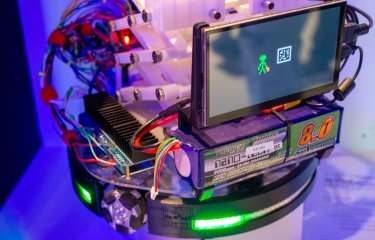Advantages of technology in education

For most of us, technology is now a part of our everyday lives, and it’s hard to remember how we got by without it. In the education sector, technological development has revolutionised the way we teach, making the learning experience truly transformative. Through technology, educators can better meet the learning needs of students, making education more accessible, inclusive and engaging.
In this article Module Leader, Christa Appleton, discusses seven advantages of using technology in education.
1. Flexibility in the way we study
Technology offers greater flexibility in the way we study. Unlike more traditional ways of learning where students would have to travel to access physical resources at a library, technology has enabled students to access learning resources with the click of a button.
The rise of online learning platforms has produced a wide range of courses and resources that can be accessed anytime and from anywhere, regardless of where you’re living in the world. With video conferencing tools, online collaboration platforms, and virtual classrooms, students can participate in real-time classes, interact with teachers and peers, and submit assignments online. This flexibility is particularly beneficial for students who have other commitments, such as work or family, or cannot attend traditional in-person classes.
2. Personalised learning
Technology enables educators to personalise learning materials and adapt tasks to the needs and preferences of the individual student. By using technology to tailor educational resources to different abilities, marginalised students are less likely to fall further behind and be more empowered and engaged in the learning process.
Online learning platforms also facilitate personalised learning, allowing students to study at their own pace, choose the length of each study period and revisit learning materials as often as they like. This self-paced learning style encourages accessibility and inclusivity as students can take the time to fully understand new concepts before moving on to the next topic.
3. Choice in how we learn
The use of multimedia and interactive technology has helped education to become more inclusive for all and create a positive learning experience. Gone are the days when teaching material could only be text-based, now educators can use technology to design a range of materials, such as videos, podcasts, interactive quizzes and games.
For younger students, gamification in education can make the learning experience more fun as well as motivational by introducing a level of play into the subject being taught. This rise in diverse teaching material helps to support different learning styles and the needs of individual students.
4. Access to resources and expertise at your fingertips
Technology provides access to a variety of educational resources. From online libraries and databases to e-books, video tutorials, and interactive simulations, these digital resources offer learners multiple avenues to explore and expand their knowledge. Technology has also allowed for students to hear directly from a range of experts and educators outside of a traditional core teaching team. For example, online guest lectures provide opportunities for students to network and link theories taught in the classroom to real industry practices.
5. Collaborative learning
Improved technology now allows opportunities for students to connect and collaborate with one another in real-time. Instant messaging software, video conferencing tools and shared documents help students to interact, discuss ideas, and collaborate on projects regardless of their physical proximity. This flexibility promotes peer learning, social engagement, and the exchange of diverse perspectives.
6. Gaining a global perspective
Advances in technology have made it easy to connect with anyone, anywhere there is internet access, which opens opportunities to broaden our horizons and learn from experiences and practice in other nations, settings and cultures that may be very different to our own. The use of technology in education can open an insightful window into global practice through conversations, access to learning materials and interactive resources. It is critical for the modern educator to understand the importance of communication, co-operation and collaboration in tackling world problems such as sustainability of global resources and equal access to education for all.
7. Improved digital literacy
If you work in education, being able to use technology competently is almost certainly an expected skill required as part of your role. This is also the case in most sectors where many jobs require IT skills. By using technology in education, students gain skills in digital literacy, which will make them more attractive to future employers and increase their job prospects.
Our Postgraduate Certificate in Higher Education (Online) supports students to hone their digital knowledge, skills, and confidence through discussion, practice, critique and evaluation of relevant technologies. For example, students have the chance to explore current developments impacting education such artificial intelligence (AI) in depth as part of their studies.
In summary, advantages of using technology in education include enhanced flexibility for students, which includes access to a wide range of resources, an environment conducive to personalised learning, and a supportive environment that fosters collaboration among peers. The use of technology in education enables students to customise their learning journey according to their needs, resulting in a more engaging experience.
If you want to be inspired and inspire others while developing your teaching practice in a supportive environment, find out more about studying a Postgraduate Certificate in Higher Education (Online) with Falmouth University.




